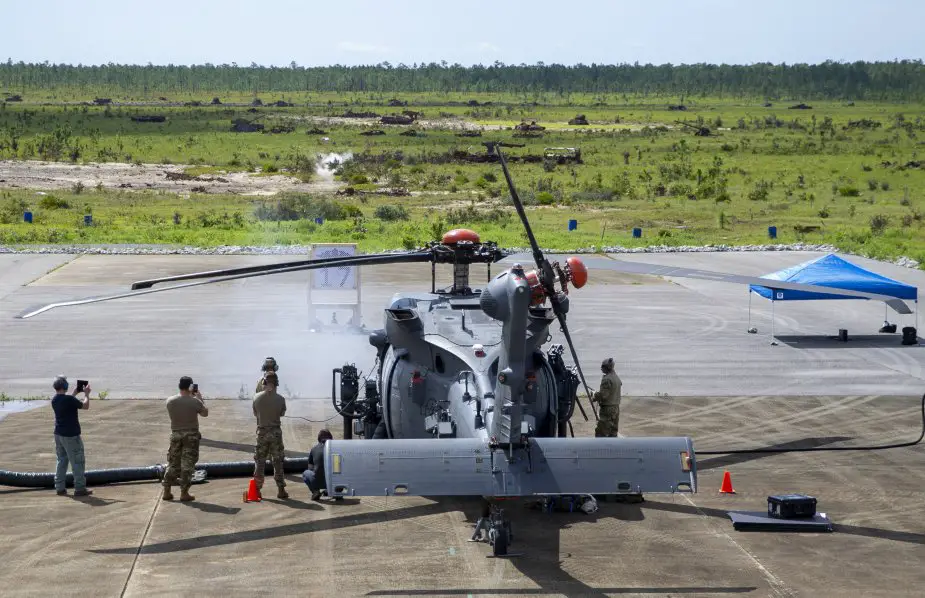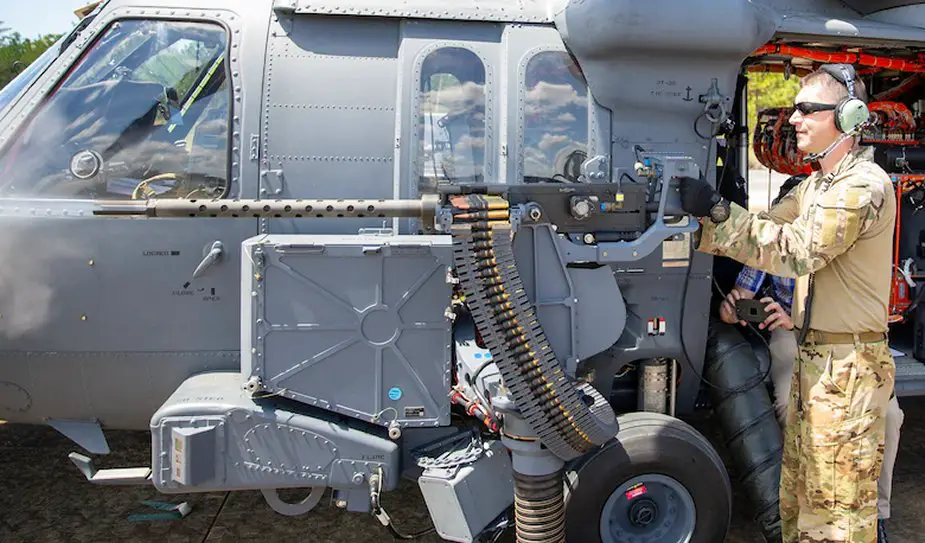Breaking news
HH-60W Jolly Green II begins live-fire testing at Eglin AFB range.
Deep within Eglin’s range, rapid, powerful gunfire reverberated across the expanse beginning Aug. 17. Live fire testing began for the HH-60W Jolly Green II’s three primary weapons. Samuel King Jr. Reports.
Follow Air Recognition on Google News at this link

Crews from the 413th Flight Test Squadron watch the firing of the GAU-18 .50 caliber machine gun on the range near Eglin Air Force Base, Fla., Aug 21, 2020. During this day of testing, nearly 2000 rounds of ammunition were fired at targets to be analyzed (Picture source : U.S. Air Force/Tech. Sgt. John Raven)
The goal of the ground testing was to verify the weapons systems functionality, accuracy, and to demonstrate the guns are safe to employ operationally. The 413th Flight Test Squadron testers and their partners performed the testing over a three-week period.
The three weapons tested were: the GAU-2, a 7.62mm gatling gun with a 3,000 rounds per minute fire rate, the GAU-18, a .50 caliber legacy machine gun with a 650-800 round fire rate, and the GAU-21, a .50 caliber newly-designed machine gun with a 950-1100 round fire rate.
The first HH-60W built, commonly referred to as Whiskey 1 within the unit, was used for the ground testing. Whiskey 1 contains specialized test instrumentation that allows, aircraft manufacturer, Sikorsky, to monitor hundreds of parameters during the flights and envelope expansion testing. That specialized instrumentation allowed the testers to record the stress and strains in the aircraft caused by firing the weapons.
The helicopter’s guns can rotate independently providing an almost 360-degree firing arc. This created a unique challenge for the squadron’s engineers to develop test and safety plans not typically encountered with fixed wing aircraft. Details such as blade rotation, human factors and instrumentation were examined and controlled for before the actual testing could begin according to Hull.
The Jolly Green’s aircrew not only operated the weapons, they were part of the evaluation as well. The crew wore special instrumentation that measured the weapon’s blast effects on their bodies. That data is part of a larger DOD study to better understand the effects of weapon blast on the human body, specifically as it relates to traumatic brain injury. The goal is to reduce injuries to service members who operate such weapons.

Master Sgt Timothy Philpott, a 413th Flight Test Squadron Special Missions Aviator, fires the GAU-18 .50 caliber machine gun on the range near Eglin Air Force Base, Fla., Aug 21, 2020. During this day of testing, nearly 2,000 rounds of ammunition were fired at targets to be analyzed (Picture source : U.S. Air Force/ Tech. Sgt. John Raven)
The ground testing phase is just the first step in the evaluation of the weapons. Data from the tests will be evaluated by the Air Force’s Non-Nuclear Munitions Safety Board, who will then clear the HH-60W for live fire flight testing. That testing is currently scheduled for later in 2020.
The live-fire tests are just another of the many 2020 milestones for the HH-60W. So far, the Jolly Green II completed aerial refueling, radar, weather and defensive system testing to name a few..



















